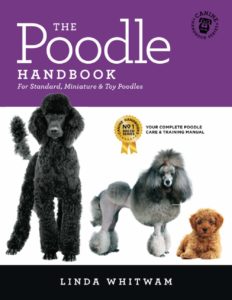The Fascinating History and Origins of the Toy Poodle Breed
The Toy Poodle, a popular and endearing breed, is loved by many for its intelligence, elegance, and charm. But have you ever wondered about the origins and history of this delightful breed? In this article, we’ll delve into the fascinating past of the Toy Poodle, tracing its journey from its earliest ancestors to the modern-day companion we know and adore.
The Early Ancestors of the Poodle
Although the Poodle is often associated with France, where it is known as the “Caniche” or “Chien Canard” (duck dog), its true origins can be traced back to Germany. The name “Poodle” is derived from the German word “Pudel,” which means “to splash in water.” This name is fitting, as the Poodle’s primary purpose was to serve as a water retriever, aiding hunters in retrieving waterfowl.
The breed is believed to have descended from various European water dogs, including the Barbet, the Hungarian Water Dog, and possibly even the North African Barak. These early water dogs were known for their curly, waterproof coats, which made them excellent swimmers and efficient retrievers in cold waters.
The Development of the Poodle Breed
Over time, the Poodle breed began to evolve and take on the distinct characteristics we associate with it today. Breeders selectively bred Poodles for specific traits, such as size, coat texture, and temperament. The result was the emergence of three distinct Poodle varieties: the Standard Poodle, the Miniature Poodle, and the Toy Poodle.
The Toy Poodle: A Royal Companion
The Toy Poodle’s history is closely intertwined with that of European royalty and aristocracy. The breed’s small size, elegance, and intelligence made it a favorite among nobles, who often kept these dogs as cherished companions and status symbols.
It is believed that the Toy Poodle was developed in the 18th century by breeding smaller-sized Miniature Poodles with one another. This selective breeding process resulted in an even smaller, more compact version of the Poodle, which was perfect for life in the royal courts of Europe.
The Toy Poodle’s Popularity Spreads
As the Toy Poodle’s popularity grew, it spread beyond the confines of royal courts and aristocratic households. The breed’s charm and intelligence made it an ideal circus performer, and it quickly became a favorite among performers and audiences alike.
In the 19th and 20th centuries, the Toy Poodle’s popularity spread to the United States and other countries. The breed was officially recognized by the American Kennel Club (AKC) in 1942, and its popularity has continued to soar ever since.
Conclusion
The Toy Poodle’s journey from its early ancestors as hardworking water retrievers to its status as a beloved companion and show dog is a testament to the breed’s adaptability, intelligence, and charm. Today, the Toy Poodle remains a favorite choice among dog owners for its loving nature, hypoallergenic coat, and undeniably adorable appearance. As we celebrate the rich history and origins of the Toy Poodle breed, we can appreciate the many qualities that make these dogs such treasured members of our families.
Books.
The Poodle Handbook: The Essential Guide to Standard, Miniature & Toy Poodles (Canine Handbooks)
